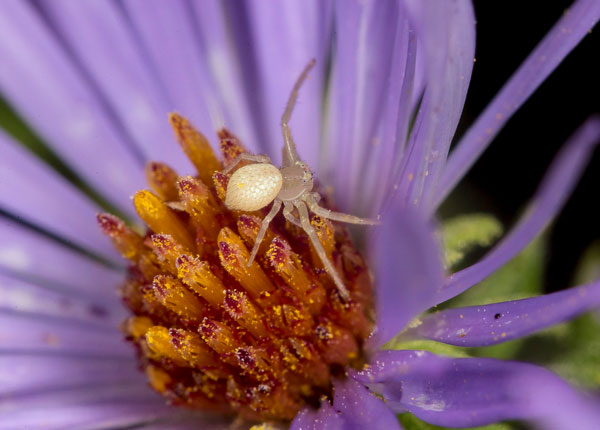
By Dan Zarlenga, Missouri Department of Conservation
Photo Caption: Crab spiders, like this one, are among the amazing arachnids that can take to the air by the magic of “ballooning”. Photo by Dan Zarlenga
In the ancient world, travelers and merchants plied the Silk Road seeking silk and other valuable goods. But did you know there’s a creature right here in Missouri that journeys on a “road” that’s made of silk. It even creates that silk itself. And the whole trip is powered by wind and electricity!
Most of us know the magic spiders spin to create their webs. Small organs in the spider’s abdomen called spinnerets can generate and release strands of silk. Many kinds of spiders weave these strands into intricate webs that ensnare their prey.
However, not all spiders use this special power to create webs, but instead… to fly. The process is called “ballooning”, and young spiders often use the technique to disperse themselves. October is a popular time for spiders to do their ballooning, and the various species of crab spiders are especially known to be frequent flyers.
When the spider decides that conditions are right to take flight, it positions itself on a high point like a stalk of foliage or branch, perhaps even a windowsill. It reads the air with sensitive hairs on its legs and waits for just the right moment. When ready to take off, the spider raises its abdomen and shoots out long, thin strands of silk — called gossamers — in a fan shaped pattern. Like a kite, the wind sweeps up the spider by its silky sail and carries it aloft to parts unknown. Depending on the size and weight of the spider and weather conditions, these parts could be a few yards away… or maybe even thousands of miles!
It was once believed that wind alone was responsible for carrying these eight-legged aviators aloft, but more recent studies show that the electric charges in the atmosphere provide much of their flight power. The Earth’s surface has a slight negative electrical charge, as does the spider standing on it. The silk spiders emit is also negatively charged, while the atmosphere contains a positive charge. Simply put, the negative attracts the positive and in an instant the spider is airborne, thanks to these electrical aerobatics.
It turns out that those sensitive hairs on spiders’ legs not only detect the wind, but also react to changes in electrical currents. This makes it likely that spiders monitor both currents of air and electricity to make sure their runways are clear for takeoff. Spiders turned on to the idea of using air and electricity to power their travels long before humans ever thought of sailing ships or electric cars!
As Halloween approaches, we often see spiders portrayed as scary creatures. But now, we can admire them for what they truly are… the amazing autumn aeronauts! Maybe you’ll even be lucky enough catch a glimpse of one for yourself as it sets out on its own Silk Road through the sky.


